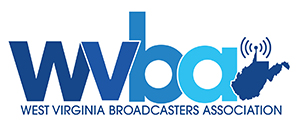TV expected to get $4.2B during campaign
The 2019-2020 election cycle is expected to generate $6 billion in political advertising spending, according to a new report from Kantar.
Broadcasters are expected to attract $3.2 billion in political ad spending, with cable picking up $1.2 billion.
Digital media is expected to get a 20% share of spending, or $1.2 billion, up from four years ago.

Radio will get $400 million in political ad spending.
“Overall, an extended Democratic primary fight would likely be a short term, second quarter 2020 sugar high,” said Steve Passwaiter, general manager for the CMAG service at Kantar’s media division. “In fact, a long primary and a Democratic convention fight would most likely reduce total campaign spending as it would reduce the amount of time the eventual Democratic nominee would have to raise and spend money for the general election."
According to Kantar, Democrat Hillary Clinton’s campaign in 2016 spent just 6% of its media budget on digital, while the Republican candidate allocated more than 40% of its ad budget on digital.
Kantar also looked at the growing over-the-top market, which was barely a factor in 2016. Kantar expects that political advertisers will be able to air more spots on these platforms and extend the reach of their messaging—particularly to younger voters.
Kantar said it estimates include only ads sponsored by candidates for federal office, and not by Political Action Committees.
Passwaiter takes a “wait and see” approach when it comes to Super PACs, which can also play a significant role in shaping advertising spend.
“Not only do the unlimited ways they can raise money add to the overall total, but they pay a premium for television since they do not qualify for the lowest unit rates. It will be interesting to see if a Democrat uses them in 2020 as most in the primary have rejected this type of support so far,” he said.
The tidal wave of political spending creates a crowded situation for brand advertisers. In the last election spot advertisers saw their share of TV inventory fall from 77% to 51%.
Political advertisers tend to flock to local news. During the final weeks of the prior election season, Kantar also found that political advertising took up 43% of available slots on local news in battleground markets, as compared to just 10% at the start of the season.
Kantar found that as a result some advertisers, 11%, stopped spending on local TV during the last phase of the campaign. Most of the others cut the number of spots they bought.
“This trend indicates that advertisers are trying to at least maintain some presence for their brands during election season, although they are no longer able to run as many ads,” said Jon Swallen, chief research officer at Kantar’s media division. “Stations may also be trying to make sure they do not shut out local advertisers even as the campaigns drag on.”
Powered by Versicherungsvergleich


